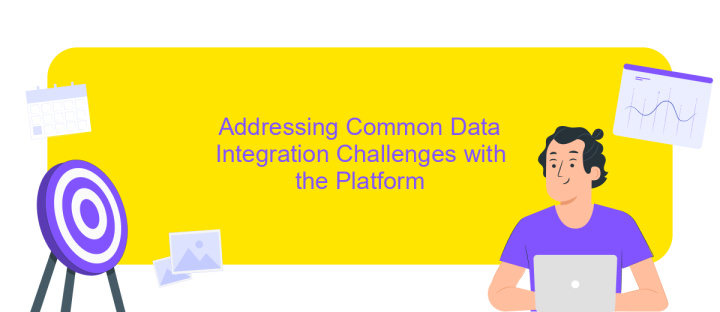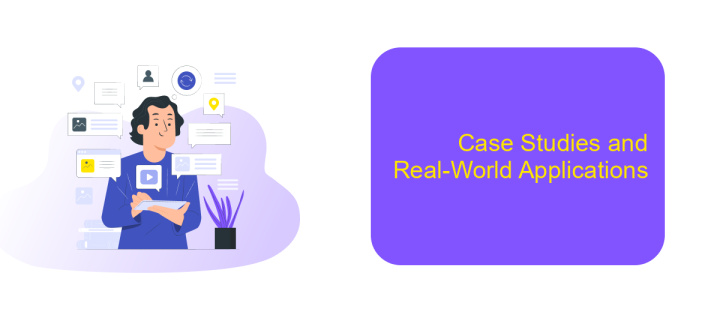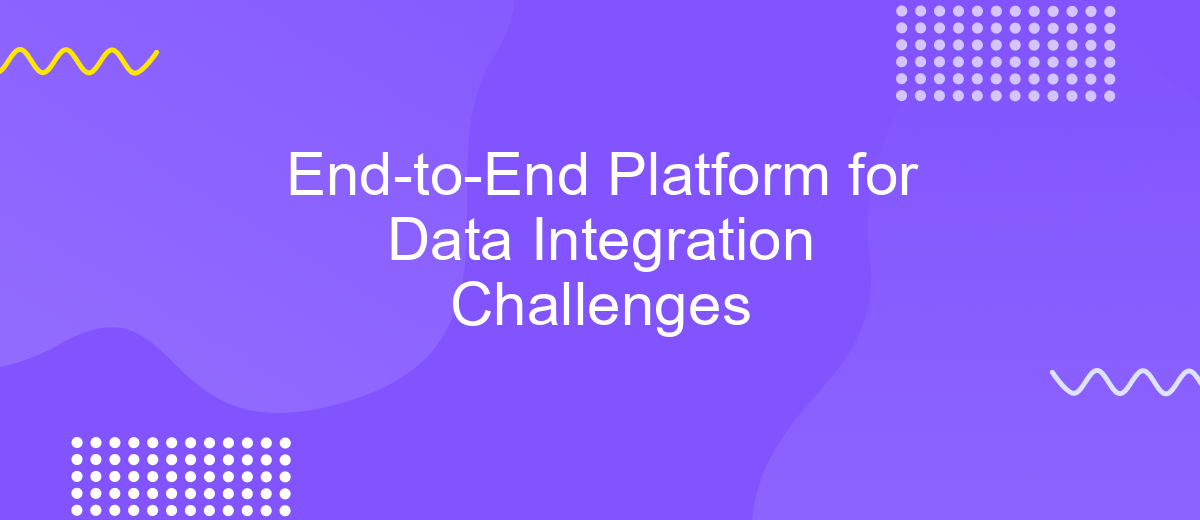End-to-End Platform for Data Integration Challenges
In today's data-driven world, organizations face numerous challenges in integrating diverse data sources efficiently and effectively. An end-to-end platform for data integration offers a comprehensive solution, streamlining the process from data extraction to transformation and loading. This article explores the key features and benefits of such platforms, highlighting how they empower businesses to harness their data's full potential and drive informed decision-making.
Introduction: The Growing Need for Seamless Data Integration
In today's digital age, organizations face an ever-increasing volume of data from diverse sources. The ability to integrate this data seamlessly has become crucial for maintaining competitive advantage and driving informed decision-making. As businesses expand globally, the complexity of data environments grows, necessitating robust solutions for data integration. This growing need underscores the importance of platforms that can efficiently manage and harmonize data across various systems.
- Data originates from multiple sources, including cloud services, on-premise databases, and IoT devices.
- Organizations require real-time data access to support agile business processes.
- Data integration ensures consistency and accuracy across different platforms and applications.
- Effective data integration facilitates better analytics and insights, driving strategic initiatives.
To address these challenges, end-to-end data integration platforms are emerging as essential tools. They offer comprehensive solutions that not only streamline data flows but also enhance data quality and governance. By leveraging such platforms, organizations can break down silos, improve collaboration, and unlock the full potential of their data assets. As the demand for seamless data integration continues to rise, investing in these technologies becomes imperative for sustained growth and innovation.
Architecture and Key Components of the End-to-End Platform

The architecture of an end-to-end platform for data integration is designed to seamlessly unify disparate data sources into a cohesive system. At its core, the platform employs a modular approach, allowing for scalable integration solutions tailored to specific business needs. Key components include data ingestion modules that support various formats and protocols, ensuring compatibility with a wide range of data sources. A centralized data repository acts as the backbone, providing secure and efficient storage for integrated data. Advanced processing engines facilitate real-time data transformation and enrichment, enabling actionable insights.
Another critical aspect of the platform is its integration management layer, which streamlines the configuration and monitoring of data connections. Services like ApiX-Drive enhance this layer by offering user-friendly interfaces for setting up and managing integrations without the need for extensive coding. The platform also incorporates robust security measures to protect sensitive data during transit and at rest. Additionally, a comprehensive analytics dashboard provides stakeholders with a clear view of data flow and performance metrics, ensuring that the platform not only integrates data but also delivers tangible business value.
Addressing Common Data Integration Challenges with the Platform

Data integration is a critical aspect of modern business operations, yet it often presents numerous challenges. These challenges include handling data from disparate sources, ensuring data quality, and maintaining consistency across systems. Our platform is designed to address these issues efficiently, offering a comprehensive solution for seamless data integration.
- Unified Data Access: The platform provides a single interface for accessing data from multiple sources, eliminating the need for complex, custom-built connectors.
- Data Quality Management: Built-in tools for data cleansing and validation ensure that the data is accurate and reliable before it enters your systems.
- Scalability: The platform is designed to grow with your business, easily handling increasing data volumes without compromising performance.
- Real-time Integration: Support for real-time data processing ensures that your systems are always up-to-date, enabling timely decision-making.
By leveraging these features, businesses can overcome common data integration challenges, leading to improved operational efficiency and better decision-making. The platform not only simplifies the integration process but also enhances data reliability and accessibility, providing a robust foundation for data-driven strategies.
Case Studies and Real-World Applications

In recent years, the adoption of end-to-end platforms for data integration has transformed numerous industries by enabling seamless data management and analytics. One notable example is in the healthcare sector, where integrated platforms allow for the consolidation of patient records, improving both patient care and operational efficiency. By integrating diverse data sources, healthcare providers can offer personalized treatment plans and enhance diagnostic accuracy.
Another compelling case is in the retail industry, where businesses leverage these platforms to unify data from multiple channels, including online and in-store transactions. This integration facilitates a comprehensive view of customer behavior, enabling targeted marketing strategies and optimized inventory management.
- Financial services use integrated platforms to streamline transaction processing and detect fraudulent activities in real-time.
- Manufacturing companies benefit from improved supply chain visibility and predictive maintenance through integrated data solutions.
- Government agencies enhance public service delivery by consolidating data across departments for better decision-making.
The versatility of end-to-end data integration platforms is evident across these varied applications. By providing a unified approach to data management, these platforms empower organizations to derive actionable insights, drive innovation, and maintain a competitive edge in their respective fields.
Conclusion and Future Directions
The exploration of an end-to-end platform for data integration challenges highlights the necessity for seamless data connectivity across diverse systems. By addressing the complexities of data integration, such platforms empower organizations to streamline operations and enhance decision-making. The integration of tools like ApiX-Drive exemplifies the potential to automate and simplify data workflows, reducing manual effort and minimizing errors. As businesses continue to generate and rely on vast amounts of data, the demand for efficient integration solutions will undoubtedly grow.
Looking to the future, the evolution of data integration platforms will likely focus on enhancing user experience through more intuitive interfaces and AI-driven automation. As the landscape of data sources expands, the ability to quickly adapt and integrate new technologies will be paramount. Moreover, ensuring data security and compliance will remain a critical consideration. By embracing these future directions, platforms can further support organizations in harnessing the full potential of their data, driving innovation and maintaining a competitive edge in the digital era.
FAQ
What is an end-to-end platform for data integration challenges?
How does an end-to-end data integration platform benefit businesses?
What are the key features to look for in a data integration platform?
Can non-technical users manage data integrations using these platforms?
How can automation be implemented in data integration processes?
Strive to take your business to the next level, achieve your goals faster and more efficiently? Apix-Drive is your reliable assistant for these tasks. An online service and application connector will help you automate key business processes and get rid of the routine. You and your employees will free up time for important core tasks. Try Apix-Drive features for free to see the effectiveness of the online connector for yourself.

